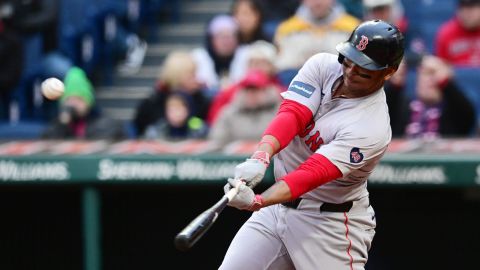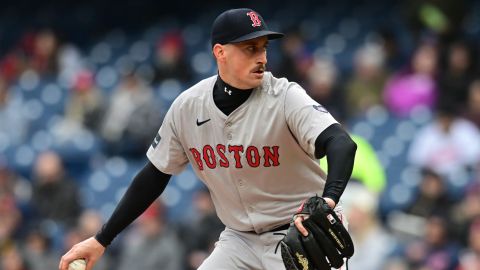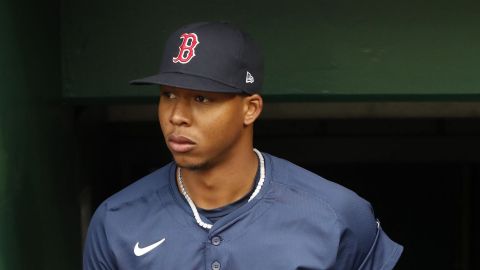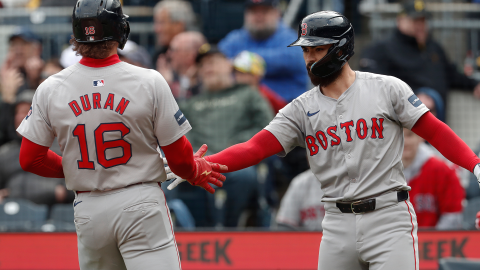The Boston Red Sox still have something to play for this season.
While it’s not quite the same as pursuing an American League East crown or an AL wild card berth, much less a World Series title, the Red Sox can use the final two months of the 2015 season to make important evaluations that could play a role in their offseason decision-making. No area of Boston’s roster figures to be monitored more than the rotation, with Henry Owens’ debut Tuesday night against the New York Yankees at Yankee Stadium representing another significant moment for the unit.
Eduardo Rodriguez took his first major league opportunity and ran with it, instantly carving out a spot in the Red Sox’s rotation with an historic run to open his career. Brian Johnson’s first audition lasted one start, with the left-hander experiencing mixed results, but he’ll return to Boston soon enough.
Now, it’s Owens’ chance. And while there’s no guarantee he’ll stick in the Red Sox’s rotation beyond Tuesday, it signifies what the upcoming stretch run is all about: gathering information.
Red Sox general manager Ben Cherington used the Major League Baseball non-waiver trade deadline as an opportunity to obtain information about other clubs, to gauge the marketplace and to lay groundwork for potential offseason deals, some of which might involve moving prospects. This isn’t to say Rodriguez, Johnson and/or Owens will be involved in any such trades, though it’s possible, but a firsthand look at each pitcher over the final two months could give the Red Sox a better read on where each stands and where the team stands, collectively, as it relates to the starting rotation.
Right now, Rodriguez seems like a safe bet to open 2016 in the Red Sox’s major league rotation based on his success this season. Johnson and Owens, on the other hand, are unknown big league quantities.
Perhaps neither Johnson nor Owens, let alone both, will accomplish enough over the final two months to solidify a spot alongside Rodriguez — it’s unclear exactly how many opportunities each will be given — or struggle enough to drastically alter the organization’s opinion, but it’s likely the Red Sox will come away from 2015 with a firmer grasp on what they ideally would like the rotation to look like in 2016.
“I think we do have a lot of good players in our farm system that we get asked about all the time. And we’re willing to give up young talent to build a good team going forward in 2016,” Cherington said last week at Fenway Park, explaining Boston’s deadline logic. “We have to look at and consider what alternatives are there, and we pursued some things last week and talked about a lot of different things.
“But in the week leading up to the deadline, there are some dynamics in play that maybe don’t allow you to see what all of your options are, so ultimately we just felt like we got a lot of information, there are things we’re willing to do but didn’t find anything that made sense us right now, and we’ll keep working and go into the offseason with a lot of information and see what we can do.”
Would three or four bad starts by Johnson, in a vacuum, persuade Boston to give $200 million to David Price or Johnny Cueto? Of course not.
Would a brief stretch of dominance by Owens convince the Red Sox they don’t need to aggressively scour the trade market for rotation upgrades, like they’re currently positioned to do? Very unlikely.
Such huge decisions are rooted in far more than a two-month crawl to the finish line.
That said, the developments of August, September and the first four days of October aren’t without some meaning. Any information is useful information, especially with an important winter ahead.
Thumbnail photo via Steve Mitchell/USA TODAY Sports Images




